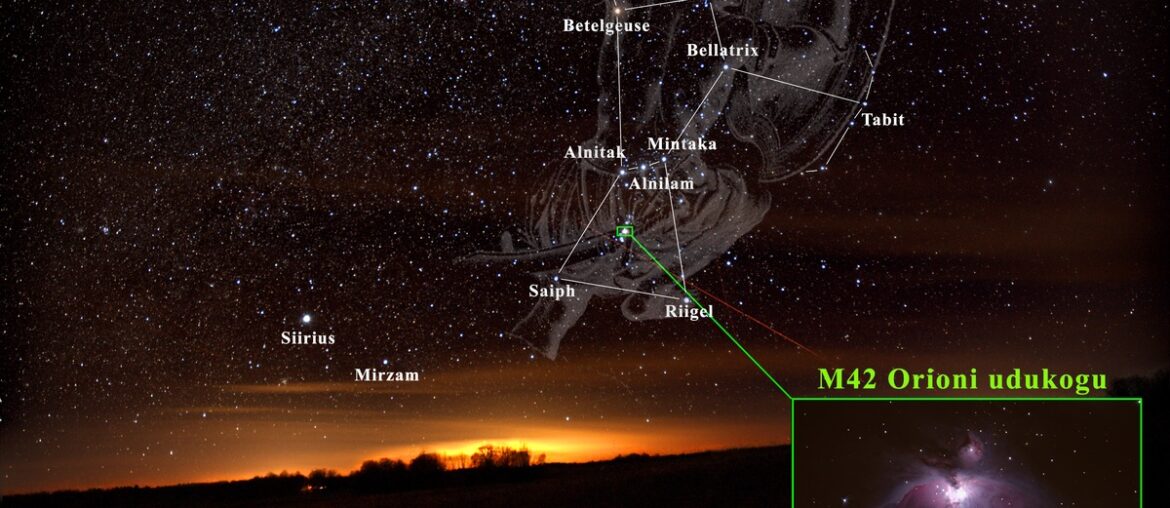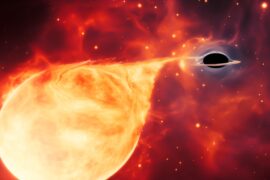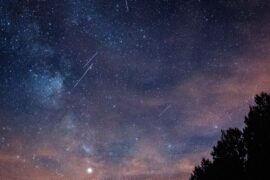Along the celestial equator, a steady band of stars crosses both northern and southern skies, so these constellations are visible from a wide range of latitudes. Observing them helps with star identification, seasonal planning and basic celestial navigation.
There are 16 Equatorial Constellations, ranging from Aquarius to Virgo; for each, the table gives Declination range (°),Right ascension (h),Notable stars (max 15 words),Description (30-50 words) — you’ll find below.
Which constellations are considered equatorial and how are they defined?
Equatorial constellations are those whose main patterns lie near the celestial equator so they can be seen from both hemispheres at different times; the list below specifies each one with declination and right ascension to show how close to the equator they sit.
When is the best time and place to view these constellations?
Visibility depends on declination and local season: many equatorial constellations rise and set for observers across latitudes, so use the Right ascension and Declination columns below or a planetarium app to find the optimal months and times for your location.
Equatorial Constellations
| Name | Declination range (°) | Right ascension (h) | Notable stars (max 15 words) | Description (30-50 words) |
|---|---|---|---|---|
| Aquarius | -24.6 to 3.3 | 20.6 to 23.9 | Sadalmelik, Sadalsuud | A large but faint zodiac constellation, the Water Bearer is best seen in autumn. It contains the Helix Nebula, one of the closest planetary nebulae. Its brightest stars are yellow supergiants, appearing as a meandering line of faint stars to the naked eye. |
| Aquila | -11.9 to 18.8 | 18.7 to 20.6 | Altair, Tarazed, Alshain | The Eagle flies through the Milky Way, prominent in the summer sky. Its brightest star, Altair, forms one corner of the Summer Triangle asterism. Look for a distinctive line of three stars representing the eagle’s head and neck, with Altair in the center. |
| Canis Minor | 0.2 to 13.2 | 7.1 to 8.2 | Procyon, Gomeisa | The Lesser Dog is a small constellation consisting of just two bright stars. Procyon is the eighth-brightest star in the sky and part of the Winter Triangle. Find it east of Orion during winter evenings; it rises just before its master, Orion. |
| Cetus | -24.9 to 10.3 | 23.4 to 3.4 | Diphda (Deneb Kaitos), Menkar, Mira | The Whale or Sea Monster is a giant constellation in the celestial “sea.” It is famous for Mira, the first discovered variable star that visibly brightens and fades over months. Best seen in autumn, it occupies a large, relatively dark patch of sky. |
| Eridanus | -57.8 to 0.05 | 1.4 to 5.2 | Achernar, Cursa (Beta Eridani) | This long, winding constellation represents a celestial river. It starts near Orion’s foot at Cursa and flows south to the brilliant star Achernar. Only the northernmost part is visible from the Northern Hemisphere, best viewed in winter, snaking west of Orion. |
| Hydra | -35.6 to 6.6 | 8.2 to 15.0 | Alphard | The Sea Serpent is the largest of all 88 constellations by area. Its faint, snake-like body stretches across a quarter of the sky. Best seen in the spring, its head is a small asterism south of Cancer, with its lone bright star Alphard. |
| Leo | -6.7 to 29.9 | 9.3 to 11.9 | Regulus, Denebola, Algieba | The Lion is one of the most recognizable zodiac constellations, a highlight of the spring sky. Its head is marked by a distinctive backward-question-mark shape of stars known as the Sickle, with the bright star Regulus at its base. |
| Libra | -30.0 to 0.03 | 14.3 to 16.0 | Zubeneschamali, Zubenelgenubi | The Scales is the only zodiac constellation representing an inanimate object. It’s a faint constellation best seen in late spring and early summer between Virgo and Scorpius. Its two main stars, Zubenelgenubi and Zubeneschamali, mark the scales’ balance beam. |
| Monoceros | -11.3 to 12.0 | 5.9 to 8.2 | Beta Monocerotis | The Unicorn is a very faint constellation located between Orion’s two dogs, Canis Major and Canis Minor. While dim, it lies in the Milky Way and contains beautiful deep-sky objects like the Rosette Nebula, making it a great target for telescopes in winter. |
| Ophiuchus | -30.1 to 14.4 | 16.0 to 18.7 | Rasalhague, Sabik, Yed Prior | The Serpent Bearer is a large constellation that the Sun passes through, often called the “13th zodiac sign.” Find this sprawling pattern above Scorpius in the summer sky. It divides the constellation Serpens into two parts, its head and its tail. |
| Orion | -11.0 to 22.9 | 4.7 to 6.4 | Betelgeuse, Rigel, Bellatrix | The Hunter is perhaps the most famous constellation, dominating the winter sky worldwide. Its three-star belt is an unmistakable marker, pointing to Sirius in the south and Aldebaran in the north. It hosts the spectacular Orion Nebula, a stellar nursery visible to the naked eye. |
| Pisces | -6.4 to 33.7 | 22.8 to 2.1 | Alrescha, Fum al Samakah | The Fishes is a dim zodiac constellation visible in the autumn sky. It is V-shaped, representing two fish tied by a cord. It is notable for containing the point where the Sun crosses the celestial equator heading north, known as the vernal equinox. |
| Serpens | -16.2 to 25.8 | 15.2 to 18.9 | Unukalhai (Alpha Serpentis) | The Serpent is unique because it is split into two parts: Serpens Caput (the Head) and Serpens Cauda (the Tail), separated by Ophiuchus. Best seen in summer, it contains the beautiful Eagle Nebula (M16) in its tail section. |
| Sextans | -11.6 to 6.5 | 9.7 to 10.9 | Alpha Sextantis | The Sextant is a small, exceedingly faint equatorial constellation introduced in the 17th century. Located between Leo and Hydra, it has no bright stars and is challenging to see without a telescope. It is best observed during the spring. |
| Taurus | -1.2 to 31.1 | 3.4 to 5.9 | Aldebaran, Elnath | The Bull is a prominent zodiac constellation, easily found in the winter sky. It features the bright, reddish star Aldebaran and two famous star clusters: the V-shaped Hyades (the Bull’s face) and the brilliant Pleiades (M45) on its shoulder. |
| Virgo | -22.5 to 14.6 | 11.6 to 15.2 | Spica, Porrima (Gamma Virginis) | The Maiden is the second-largest constellation and a zodiac sign, best seen in the spring. Its brightest star, Spica, is easy to find by following the arc of the Big Dipper’s handle. Virgo is rich in galaxies, hosting the massive Virgo Cluster. |
Images and Descriptions
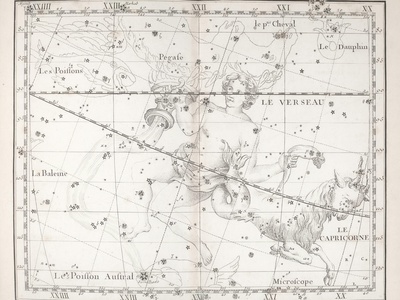
Aquarius
A large but faint zodiac constellation, the Water Bearer is best seen in autumn. It contains the Helix Nebula, one of the closest planetary nebulae. Its brightest stars are yellow supergiants, appearing as a meandering line of faint stars to the naked eye.
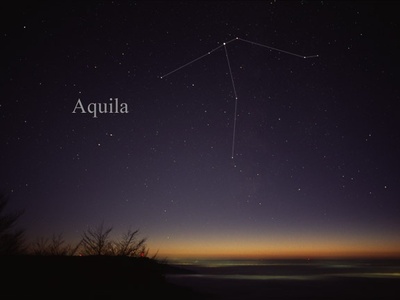
Aquila
The Eagle flies through the Milky Way, prominent in the summer sky. Its brightest star, Altair, forms one corner of the Summer Triangle asterism. Look for a distinctive line of three stars representing the eagle’s head and neck, with Altair in the center.
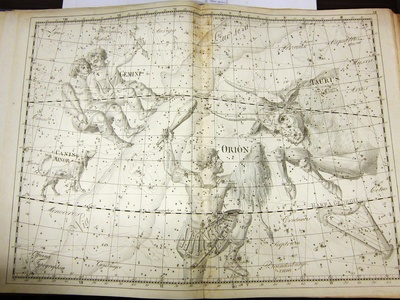
Canis Minor
The Lesser Dog is a small constellation consisting of just two bright stars. Procyon is the eighth-brightest star in the sky and part of the Winter Triangle. Find it east of Orion during winter evenings; it rises just before its master, Orion.
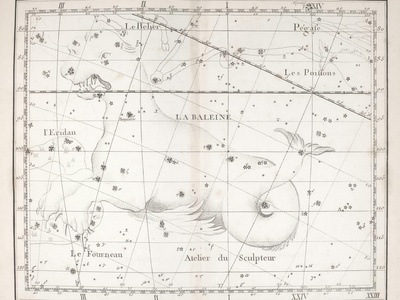
Cetus
The Whale or Sea Monster is a giant constellation in the celestial “sea.” It is famous for Mira, the first discovered variable star that visibly brightens and fades over months. Best seen in autumn, it occupies a large, relatively dark patch of sky.
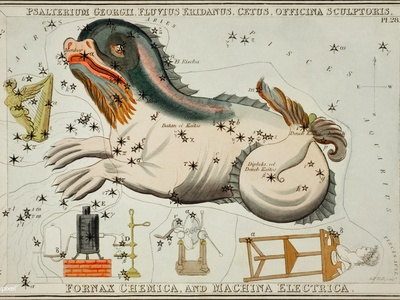
Eridanus
This long, winding constellation represents a celestial river. It starts near Orion’s foot at Cursa and flows south to the brilliant star Achernar. Only the northernmost part is visible from the Northern Hemisphere, best viewed in winter, snaking west of Orion.
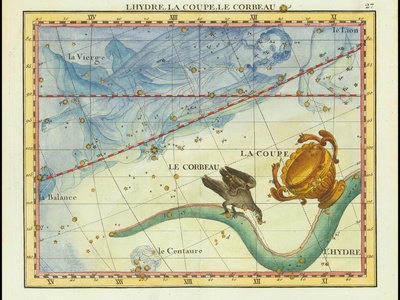
Hydra
The Sea Serpent is the largest of all 88 constellations by area. Its faint, snake-like body stretches across a quarter of the sky. Best seen in the spring, its head is a small asterism south of Cancer, with its lone bright star Alphard.
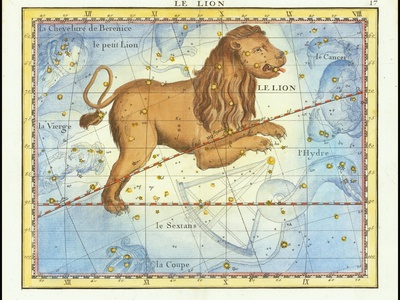
Leo
The Lion is one of the most recognizable zodiac constellations, a highlight of the spring sky. Its head is marked by a distinctive backward-question-mark shape of stars known as the Sickle, with the bright star Regulus at its base.
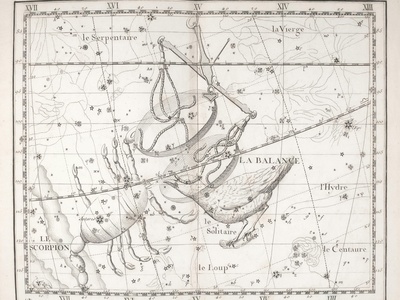
Libra
The Scales is the only zodiac constellation representing an inanimate object. It’s a faint constellation best seen in late spring and early summer between Virgo and Scorpius. Its two main stars, Zubenelgenubi and Zubeneschamali, mark the scales’ balance beam.
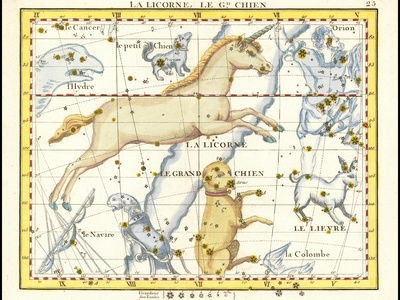
Monoceros
The Unicorn is a very faint constellation located between Orion’s two dogs, Canis Major and Canis Minor. While dim, it lies in the Milky Way and contains beautiful deep-sky objects like the Rosette Nebula, making it a great target for telescopes in winter.
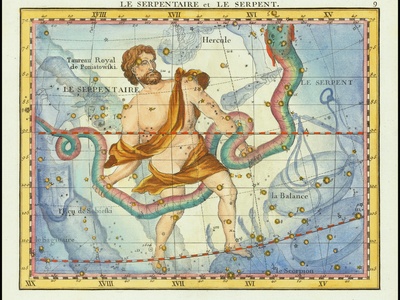
Ophiuchus
The Serpent Bearer is a large constellation that the Sun passes through, often called the “13th zodiac sign.” Find this sprawling pattern above Scorpius in the summer sky. It divides the constellation Serpens into two parts, its head and its tail.
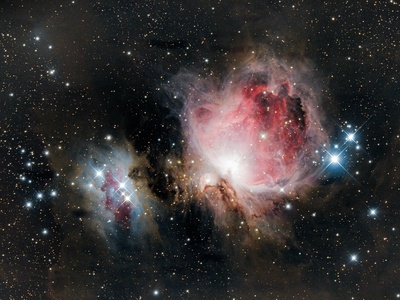
Orion
The Hunter is perhaps the most famous constellation, dominating the winter sky worldwide. Its three-star belt is an unmistakable marker, pointing to Sirius in the south and Aldebaran in the north. It hosts the spectacular Orion Nebula, a stellar nursery visible to the naked eye.
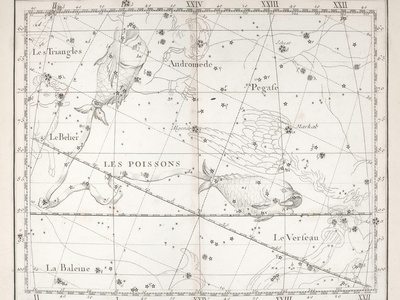
Pisces
The Fishes is a dim zodiac constellation visible in the autumn sky. It is V-shaped, representing two fish tied by a cord. It is notable for containing the point where the Sun crosses the celestial equator heading north, known as the vernal equinox.
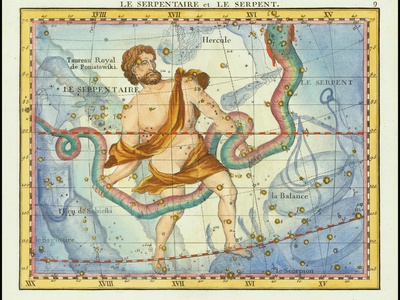
Serpens
The Serpent is unique because it is split into two parts: Serpens Caput (the Head) and Serpens Cauda (the Tail), separated by Ophiuchus. Best seen in summer, it contains the beautiful Eagle Nebula (M16) in its tail section.
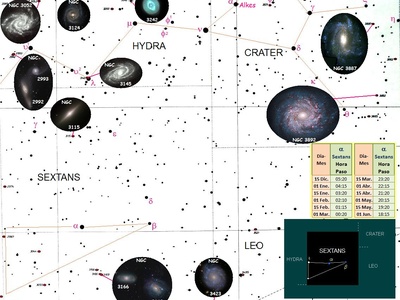
Sextans
The Sextant is a small, exceedingly faint equatorial constellation introduced in the 17th century. Located between Leo and Hydra, it has no bright stars and is challenging to see without a telescope. It is best observed during the spring.
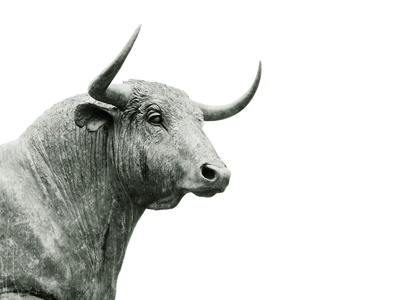
Taurus
The Bull is a prominent zodiac constellation, easily found in the winter sky. It features the bright, reddish star Aldebaran and two famous star clusters: the V-shaped Hyades (the Bull’s face) and the brilliant Pleiades (M45) on its shoulder.
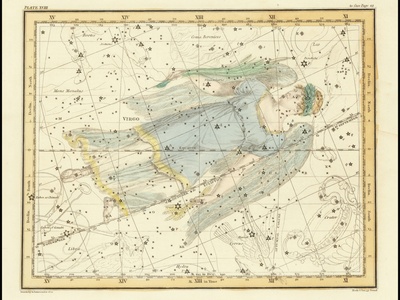
Virgo
The Maiden is the second-largest constellation and a zodiac sign, best seen in the spring. Its brightest star, Spica, is easy to find by following the arc of the Big Dipper’s handle. Virgo is rich in galaxies, hosting the massive Virgo Cluster.
Enjoyed this article?
Get daily 10-minute PDFs about astronomy to read before bed!
Sign up for our upcoming micro-learning service where you will learn something new about space and beyond every day while winding down.

